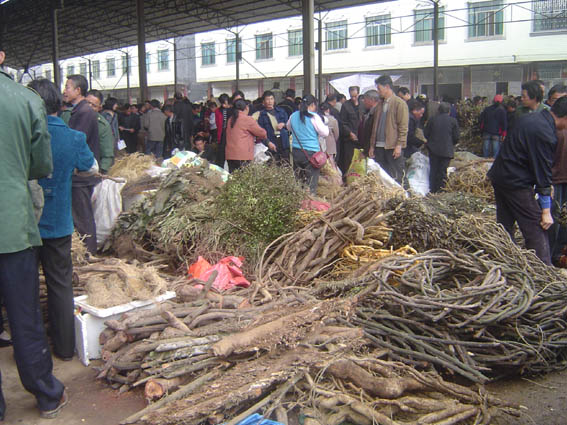People of Anren County Offer Sacrifice in Spring Equinox to Lord of Land

It was said that Emperor Yan, Patron of Agriculture, has explored all kinds of herbs to cure various diseases and enlighten the civilians to do agriculture with his eight retinues in Anren County. To commemorate them, the descendants built a temple named "Nine Dragons Temple", and the place where he cooked was named "the Hall of Xianghuo" and the pond where he washed the medical herbs "Medical Lake".
During the late Tang dynasty (923-936), a temple in the Fragrant Lawn (located in the Anren County now) was built to offer sacrifices to him. Worshippers started to carry batches of candles and paper money in endless streams. And then there were gradually some people doing herbal medicine business, selling rattan ropes, hoes and bamboo hats, etc., with the scale becoming increasingly larger and finally developed into the transaction of local agricultural and sideline products.
In the fifth year of the reign by Emperor Xianpingin the Song Dynasty (1002 AD), it was set that the festival fell on the Spring Equinox and Sheri Festival— the days to offer sacrifice. According to the Lunar Calendar, a year is divided into 24 solar terms, about one solar term for 15 days. It ruled the first three days and the last three days as the days of offering sacrifices to ancestors, called vulgarly "Hurry to Fenshe Festival". The festival is held in the Spring Equinox, the Day of offering sacrifice to Lord of Land, in Nanmenzhou of Anren County and lasts for 7 to 10 days.




